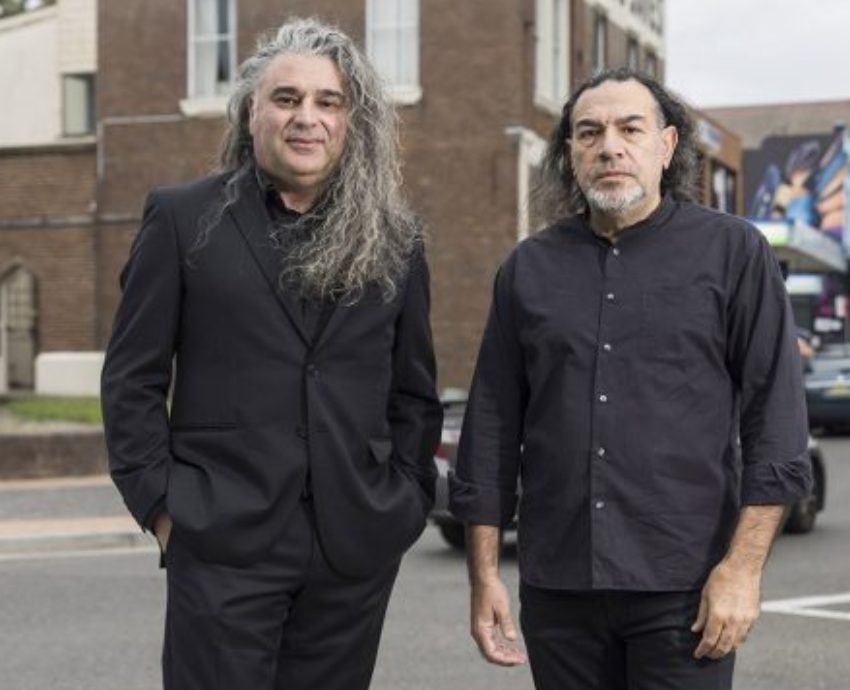
Cowardice is the milk that runs in the veins of many event organisers, especially when it might provoke the unexpected.
Creative Australia’s dropping of Lebanese-born artist Khaled Sabsabi as Australia’s representative for the 2026 Venice Biennale, along with the curator of the pavilion’s artistic team, Michael Dagostino, shows that true artistic subversion is not the game.
Australia’s increasingly hysterical atmosphere means debate that supposedly tests “social cohesion” has been cut.
Journalists are given to following strict talking points, from President Donald Trump to Israel.
Criticism of Israel’s levelling Gaza and now, it seems, its operations in the West Bank, have led some in both Israel and Australia to claim that antisemitism is more virulent than usual.
Threats have been inflated and Opposition Leader Peter Dutton is inspired to secure votes in the lead up to a federal election.
A pathology has taken root, from art circles to universities.
It began with an intervention by The Australian newspaper, an outlet Israel can rely on as its propagandistic emissary.
One of the outlet’s correspondents, Yoni Bashan, had been embedded with Israeli forces in Gaza. After receiving a number of messages, Bashan took an interest in Creative Australia’s choice for the Biennale, thinking he had scored a coup by going through Sabsabi’s previous work.
With a sense of preschool wonder, he found a 2007 video installation titled You, which features Hassan Nasrallah, the assassinated former leader of the Lebanese Shiite militia group Hezbollah.
Nasrallah, whose voice and image appears in the montage, was slain by Israel in its latest war with Hezbollah.
The buffoonish, hatchet assessment (“I’m not an arts reporter,” Bashan conceded in a podcast, calling the art industry “a bit too fluty for me”) claimed that Creative Australia’s selection of Sabsabi was a “creative form of racism”.
Rather than understanding the horrors of war which Sabsabi, a refugee from the Lebanese civil war has been preoccupied with, the Australian was thrilled to announce it had uncovered a “terrorist sympathiser”.
The Australian’s intervention, coupled with a discussion in federal parliament that scorned a 2006 video, titled Thank you very much, showing the 9/11 attacks and then US President George W. Bush, was pitifully juvenile.
Home affairs and arts minister Tony Burke’s expression of shock was craven.
Within hours of that parliamentary exchange, Creative Australia convened an emergency board meeting that unanimously endorsed cancelling the contract regarding the Venice Biennale representation featuring Sabsabi and Dagostino.
It took just six days from Creative Australia’s announcement praising the artist’s work for exploring “human collectiveness” and questioning “identity politics and ideology, inviting audiences to do the same”.
This provoked resignations and stinging criticism.
Mikala Tai, an important figure in Creative Australia’s visual arts departments over the last four years, wrote to Chief Executive Adrian Collette stating that she had resigned “in support of the artist”.
To the list of resignations can be added artist and board member, Lindy Lee and Simon Mordant, twice commissioner at the Venice Biennale, who told ABC Arts that he “immediately resigned” his role and terminated financial support.
“There was a question asked in parliament [on February 13] and that subsequently resulted in an unprecedented move by Creative Australia to rescind the contract.”
Mordant could not think of any other situation “in any country in the world” where something of this nature had happened, “certainly” not in Australia.
Sydney’s Museum of Contemporary Art (MCA), which accepted “You” and exhibited it in 2009, rightly wondered how the decision was reached.
In a statement to the Australian Financial Review on February 21, the MCA expressed concern with “the lack of transparency in Creative Australia’s process”.
The decision had “major ramifications for the arts in Australia and the reputation of Australia in the world at a time when creating space for diverse artist voices and ideas has never been more important”.
Other galleries have been silent on the decision, even those whose funding does not depend on Creative Australia.
The Art Gallery of NSW, which ran Sabsabi’s solo show in 2019, is a case in point. It stated it was “not commenting on this matter at this time”.
Liz Ann Macgregor, who ran the MCA for more than two decades until 2021, offered a cast iron reason for the cringe worthy reticence. “I think people are second-guessing that they might upset some of their donors if they say something.”
The teams shortlisted to join the biennale pavilion were also keen to express their views in an open letter addressed to the Creative Australia board.
“We believe that revoking support for the current Australian artist and curator representatives for Venice Biennale 2026 is antithetical to the goodwill and hard-fought artistic independence, freedom of speech and moral courage that is at the core of arts in Australia, which plays a crucial role in our thriving and democratic nation.”
The letter goes on to ask the salient question.
“If Creative Australia cannot even stand by its expert-led selection for a matter of hours, abandoning its own process at the first sign of pressure, then what does that say about its commitment to artistic excellence and freedom of expression?”
The answer? Everything.
[Binoy Kampmark currently lectures at RMIT University.]